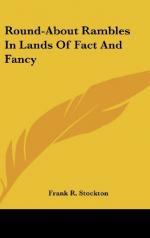[Illustration: DISCOVERIES OF LOAVES OF BREAD BAKED EIGHTEEN HUNDRED YEARS AGO.]
It is a mill and bakery together. The Pompeiians sent their grain to the baker, and he ground it into flour, and, making it into dough, baked it and sent back loaves of bread. The mills look like huge hour-glasses. They are made of two cone-shaped stones with the small ends together. The upper one revolved, and crushed the grain between the stones. They were worked sometimes by a slave, but oftenest by a donkey. There is the trough for kneading the bread, the arched oven, the cavity below for the ashes, the large vase for water with which to sprinkle the crust and make it “shiny,” and the pipe to carry off the smoke. In one of these ovens were found eighty-one loaves, weighing a pound each, whole, hard, and black, in the order in which they had been placed on the 23d of November, 79. Suppose the baker who placed them there had been told that eighteen hundred years would elapse before they would be taken out!
Having wandered about the city, and looked at all the streets, monuments, and dwellings, and having seen very much more than I have here described—the Forum, or Town Hall, the theatres, baths, stores, temples, the street where the tombs are—and having looked at the rude cross carved on a wall, showing that the religion of Christ had penetrated to this Pagan city—having examined all these, you will visit the amphitheatre.
To do this we must leave the part of the city that has interested us so much, and, passing once more through the vineyards and orchards that still cover a large portion of the city, descend again into a sort of ravine, where we will find the amphitheatre. It was quite as the end of the city, next to the wall. It is a circus. The large open space in the centre was called the arena. Here there were fierce and bloody fights; wild beasts fought with each other, or with men trained to the business and called gladiators, and these gladiators often fought with each other—all for the amusement of the people, who were never satisfied unless a quantity of blood was shed, and many were killed. This arena was covered with sand, and a ditch filled with water separated it from the seats.
The seats arose from this arena, tier above tier. There were three divisions of them, separating the rich from the middle class, and these again from the slaves. It was well arranged for the comfort of the audience, having wide aisles and plenty of places of exit. The whole was covered with an awning. In the wall around the arena are the holes where thick iron bars were inserted as a precaution against the bounds of the panthers. To the right of the principal entrance are two square rooms with gratings where the wild beasts were kept. This amphitheatre would hold twenty thousand persons!




